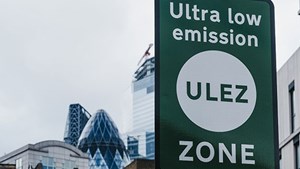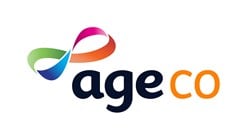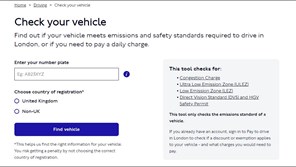ULEZ, congestion charge and clean air zones: what you need to know
6 minute read

In this article, you can find the latest information on emission charges and exemptions for vehicles entering cities across the UK, including the Ultra Low Emission Zone (ULEZ) in London

Over 50s Car Insurance
Age Co helps drivers stay protected on the road. We’re 100% owned by Age UK and our profits go back to the charity.
It is a subject rarely talked about, but up to 36,000 premature deaths in the UK are caused by air pollution each year.
Government and local authorities are tackling pollution’s impact with a range of charges on vehicles entering cities across the UK. Here are some of the key ones:
Congestion charge: a £15 daily charge if you drive within central London, regardless of your vehicle’s emission levels
Ultra Low Emission Zone (ULEZ): a £12.50 daily charge for vehicles that do not meet certain emission standards and that drive within central London and surrounding London boroughs
Clean air zones: in cities other than London where daily charges are in force for vehicles that do not meet certain lower emission standards
These charges are intended to reduce the number of cars entering cities and encourage people to use public transport. The funds raised will be invested into low to zero-carbon public transport vehicles and expanded public transport links in and around city centres.
London: what charges should you be aware of?
If you’re planning to drive into London, you may need to pay:
- The congestion charge
- ULEZ charge
It’s possible you might need to pay both charges, though not always. This is why it can be helpful to understand when the charges apply before driving around the city.
London’s Congestion charge
Unless exempt, all vehicles regardless of emissions need to pay the daily £15 congestion charge. To check the areas of London where it applies, you can look up the relevant postcodes on the congestion charge zone map.
Blue Badge holders can apply for an exemption. You will need your London Road User Charging account information to hand while you do so.
Other exemptions from the congestion charge include vehicles used by anyone who is disabled and which are already exempt from vehicle tax and have a disabled taxation class. Vehicles carrying more than one disabled passenger are also exempt if the vehicle is registered with the Driver and Vehicle Licensing Agency (DVLA).
The congestion zone is active Monday to Friday, from 7 am-6 pm, and on Saturdays and Sundays, from 12 noon-6 pm, including bank holidays. There are a range of ways to pay which are detailed here on the TFL website.
There is no congestion charge to pay on Christmas Day and New Year’s Day bank holiday.
How to check if you need to pay the ULEZ charge
Your vehicle may pass the emission standards and be exempt from the daily charge if it runs on petrol and is under 16 years old or is diesel-powered and less than six years old. The quickest and most accurate way to check if you will have to pay the charge is by visiting the Check Your Vehicle page on the TfL website.
This is what it will look like online:

When and where does ULEZ operate?
The ULEZ zone operates in central and inner London where older, more polluting vehicles must pay a £12.50 daily charge to drive. The zone operates 24 hours a day, seven days a week, every day of the year (except Christmas Day).
You can check if your destination falls within the expanded area using TfL’s postcode checker. This will also tell you if you have to pay the congestion charge.
Things to keep in mind:
- The daily charge runs from midnight to midnight. So, if you drive within the zone across two days (e.g., before and after midnight), you’ll need to pay two daily charges.
- The ULEZ zone operates even at times when the congestion charge doesn’t. So, if you’re driving within the ULEZ zone during these times, you’ll be charged for both. You can set yourself up for auto pay to avoid a hefty penalty.
- If you’re only going to London for a day trip, it may be cheaper to take the train or tube than to drive. You’ll avoid having to pay the ULEZ charge, congestion charge and parking.
ULEZ exemptions and refunds
Some drivers and vehicles may qualify for a temporary exemption or grace period, while some are entirely exempt. The grace period or temporary exemption period will come to an end in October 2027.
- If you’re disabled, you may be eligible for a grace period (temporary exemption) from paying the ULEZ charge. You can check if you’re eligible on the TfL website. There are three exemptions, which we outline in more detail below. They include vehicles for disabled people, wheelchair-accessible vehicles and people who are granted disabled benefits
- Check with your NHS treating hospital if you are eligible to claim back any ULEZ and/or congestion charge. This may be the case if you are clinically assessed as too ill to travel to an appointment on public transport
Vehicles for disabled people
To apply for the grace period/temporary exemption, sign into your Road User Charging account. Go to ‘section 1’ of the discounts and exemptions page and then click the ‘Make an Enquiry’ button.
Blue Badge holders are eligible for a grace period from paying the ULEZ charge if their vehicle meets one of the following criteria:
- It is registered with the DVLA as a ‘disabled’ or ‘disabled passenger vehicle’ for tax purposes and does not change tax class before 24 October, 2027
- It is owned by a disabled person over state pension age who receives Attendance Allowance, even if it is not classified as a ‘disabled’ or ‘disabled passenger vehicle’ for tax purposes
Wheelchair-accessible vehicles
Wheelchair-accessible vehicles (WAVs) that do not meet the ULEZ emission standards are eligible for a temporary exemption until October 24, 2027. To qualify, the WAV must have been converted by a mobility expert and have adaptations.
You will also have to make sure the vehicle is registered with the DVLA (or equivalent EEA body) in the name of the applicant. To apply for the grace period/temporary exemption, you will need to provide images of your vehicle’s logbook (V5C), a photo ID of the applicant and three images of your vehicle’s permanent conversion for a disabled person’s use.
Disabled benefits
If you receive disability benefits then you can also apply for a grace period or temporary exemption. Such benefits include the Personal Independence Payment (PIP), higher mobility rate Disability Living Allowance (DLA) and War Pensioners’ Mobility Supplement. It could also include people with a terminal illness or being registered blind in which case you would need a nominated driver with the vehicle, which must be used exclusively for the disabled person's needs.
Historic and classic cars: are they exempt from the ULEZ charge?
There are two types of classic or “historic” vehicles exempt from paying the charge:
- Vehicles built before 1 January, 1973
- Vehicles over 40 years old and registered with the DVLA as historic
Note that if the vehicle meets the above criteria, but is registered outside the UK, you will still have to register it with the DVLA before driving into the ULEZ zone.
Contact details for ULEZ
If you have any questions about ULEZ or want to challenge a penalty charge, you can enquire by phone. Here is the contacts page.
Clean air zones: which cities have signed up?
London set the stage for vehicle emission charging, but other cities in England have followed the capital’s example with clean air zones of their own. Vehicles that do not meet lower emission standards, will have to pay a daily charge in these cities, with costs varying across the regions.
At the time of writing, the following cities had clean air zone charges:
- Birmingham
- Bristol
- Oxford
- Bath (only applies to lorries, taxis and other commercial vehicles)
- Bradford
- Portsmouth
- Newcastle
- Sheffield
- Southampton (only applies to lorries, taxis and other commercial vehicles)
- Aberdeen
- Dundee
- Edinburgh
- Glasgow
If you are travelling into any of these cities, you can check to see if your vehicle will be charged by logging on to the drive in a clean zone page, which shows the process step by step.
Summary
Preparing for any trip in advance can make the journey a smooth one without any costly surprises. If you’re heading into London or another city with a clean air zone, keep these key points in mind:
- Unless exempt, all vehicles need to pay a £15 daily congestion charge in certain areas of London - Monday to Friday, from 7 am-6 pm, and on Saturdays and Sundays, from 12 noon-6 pm, including bank holidays.
- ULEZ applies to older or polluting vehicles all year round and charges £12.50 to drive in central and inner London.
- If applicable, you will be charged for both ULEZ and the congestion charge when driving through London.
- You can check if you will have to pay ULEZ by visiting the Check Your Vehicle page on the TfL website.
- Other cities, such as Newcastle and Glasgow, have clean air zones. You can use the clean zone page to check if a city you plan on visiting has charges in place.

Sign up to the Age Co Newsletter
Each month, our email newsletter delivers inspiring stories, practical guides to later life, plus the latest news about Age Co and the charitable work we support.
